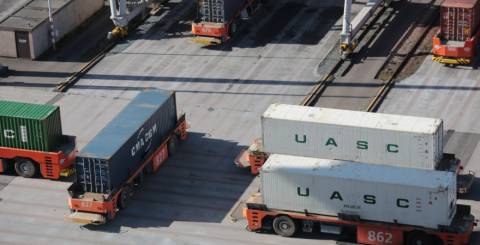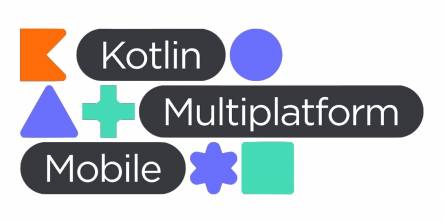Logistics Management Systems: A Guide to Warehouse, Transportation, and Distribution Software

In the fast-paced world of supply chain management, it is vital to coordinate logistics operations for businesses aiming to meet customer demands, reduce costs, and stay competitive. This is where logistics management systems, encompassing Warehouse Management Systems (WMS), Transportation Management Systems (TMS), and Distribution Management Systems, play a pivotal role.
In this blog, I'll delve into how these software solutions and how they can work together to streamline processes, enhance efficiency, and revolutionize logistics.
1. Warehouse Management Systems (WMS): The Nerve Center of Inventory
The warehouse is at the heart of logistics, where inventory is managed, orders are processed, and goods are dispatched. WMS acts as the nerve center, orchestrating these operations with precision.
• Warehouse Organization: WMS optimizes warehouse organization by digitally mapping the storage space. It includes defining bin locations, managing stock levels, and ensuring efficient order fulfillment. For example, if a product is in high demand, WMS can strategically place it closer to the shipping area, reducing picking time and enhancing overall efficiency.
• Order Processing: One of the primary functions of WMS is to streamline order processing. Businesses can significantly reduce order fulfillment times by automating and optimizing this aspect. WMS tracks orders from initiation to completion, minimizing errors and ensuring that the right products reach the right customers on time.
• Inventory Tracking and Visibility: Real-time inventory tracking is a game-changer in modern logistics. WMS provides visibility into inventory levels, locations, and movement, allowing businesses to make informed decisions. This level of transparency minimizes the risk of stockouts, overstocks, and associated costs.
• Labor Management: WMS extends its impact to labor management by optimizing workforce productivity. It assigns tasks efficiently, monitors performance, and identifies areas for improvement. It enhances the overall efficiency of warehouse operations and contributes to cost savings through better labor utilization.
2. Transportation Management Systems (TMS): Navigating the Road to Efficiency
Once products are ready to leave the warehouse, the focus shifts to transportation. TMS comes into play, revolutionizing how businesses manage the movement of goods from one point to another.
• Route Optimization: TMS excels in route optimization, considering distance, traffic, and delivery windows. Businesses can reduce transportation costs and ensure timely deliveries by selecting the most efficient routes. It is particularly vital in today's world of just-in-time logistics.
• Carrier Management: A suitable carrier is crucial for timely and cost-effective deliveries. TMS assists in carrier selection, negotiation, and overall management. By establishing solid relationships with carriers, businesses can improve service levels, negotiate better rates, and ensure the reliability of their transportation network.
• Visibility and Tracking: Real-time visibility is a cornerstone of TMS. It allows businesses and customers to track shipments at every stage of the transportation process. This transparency improves customer satisfaction by keeping them informed and will enable businesses to address any issues that may arise proactively.
• Freight Auditing and Payment: TMS automates the often complex freight auditing and payment processes. By automatically verifying carrier invoices against agreed-upon rates and services, businesses can eliminate billing errors, reduce disputes, and ensure accurate financial transactions.
3. Distribution Management Systems: Harmonizing the Final Leg
As products reach their destination, whether a retail store or directly to the end consumer, Distribution Management Systems orchestrate the logistics journey's final leg.
• Order Fulfillment Automation: Distribution Management Systems automate the order fulfillment process, seamlessly connecting with WMS and TMS. It ensures that orders are processed efficiently and that the right products are dispatched for delivery.
• Cross-Docking: For businesses looking to minimize inventory holding costs and streamline distribution, cross-docking is a crucial strategy facilitated by Distribution Management Systems. This involves transferring goods directly from inbound to outbound transportation, minimizing storage needs.
• Inventory Allocation: Optimizing inventory allocation is critical for efficient distribution. Distribution Management Systems analyze demand patterns and allocate inventory accordingly. It helps ensure that products are strategically placed for quick and efficient order fulfillment.
• Multi-Channel Distribution: With the rise of e-commerce and multiple sales channels, businesses must adapt their distribution strategies. Distribution Management Systems support multi-channel distribution by synchronizing inventory levels and order processing across various platforms. This not only enhances customer satisfaction but also expands market reach.
Final Words:
In conclusion, the effective functioning of logistics management systems is a testament to the power of technology in transforming supply chain operations. Warehouse Management Systems, Transportation Management Systems, and Distribution Management Systems work harmoniously to optimize every step of the logistics journey. From the meticulous inventory organization in warehouses to the strategic planning of transportation routes and the seamless orchestration of the final distribution, these systems revolutionize how businesses handle their logistics. I recommend contacting a supply chain software development company ASAP if you also need such a system in your stockpile.
By embracing these technologies, businesses can achieve greater efficiency, reduce costs, and enhance customer satisfaction. In a world where speed and accuracy are paramount, logistics management systems are the driving force behind streamlined supply chain operations, ensuring that products reach their destination on time and in optimal condition. As technology advances, the future of logistics management holds even more tremendous promise, with innovations that will further elevate the efficiency and effectiveness of these critical systems.
Similar Articles
In today's technologically advanced landscape, understanding heat distribution is critical for enhancing efficiency and safety across various sectors. Infrared thermography, a pivotal imaging technique, has revolutionized how professionals view and analyze thermal performance.
In this digital age, there are many options available for marketing, but the one that stands out as one that can transform the marketing realm is programmatic connected TV (CTV). The programmatic CTV approach for advertising shows the changing trend in how brands would like to connect with their audience.
PHP has a dominant market position, with over 79% of websites powered to some degree. Developers majorly utilize organized and leveled PHP basic functions, known as PHP frameworks, to create flexible output.
The nonstop hum of machines around us, from the humongous industrial complexes to the processors within the gadgets, shapes our everyday lives. These mechanical advancements have become essential, driving everything from fundamental necessities to our vehicles, airplanes, and so forth.
New methods of managing a Pilate business are transforming the way studios operate. It simplifies routine tasks and helps fitness businesses to grow and facilitate their customers in various ways.
Discover if the S23 Ultra case is compatible with the S24 Ultra. Get insights on fit, protection, and functionality in this comparison.
In the era of astoundingly quick technological progress, organizations are increasingly feeling the need to adjust to the evolving market demands and their requirements by embracing digital transformation
With the rise of mobile devices and the ever-growing demand for cross-platform solutions, businesses are constantly seeking efficient ways to develop applications that can be used on multiple platforms. This is where Kotlin Multi Platform comes into play. Kotlin Multi-platform is a versatile technology that allows developers to write code once and deploy it on various platforms such as Android, iOS, and web.
Discover reliable network cabling solutions ensuring seamless connectivity for remote work. Enhance productivity with consistent connections anywhere.









